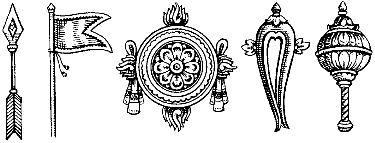
|
|||||||
|
| |||||||
Past and Future Trends in Contemporary Hinduismby Swami Agehananda BharatiI regard both the recent past and the future of Hinduism with mild optimism. It is not so much any specific event or events of the past that I regard as the most significant, though such could be pinpointed (e.g., the creation of the Vishva Hindu Parishad, the dialectic reactions to the sati event in Deorala, the withdrawal of the Kamakoti Peedam Swami from the Math and his return, etc.). But these are, singly seen, rather less important than salutary, albeit gradual, movement away from a moralistic, moralizing, Protestant ethic type understanding of Hinduism in the wake of Vivekananda and social reform-oriented monastics and lay people around the turn of the century and later, toward a more reflexive, less uptight, sacerdotally more informed, more experimental and individually experiential form of Hinduism. Whereas before everything that was not straight laced, puritanical theism was simply rejected as ‘superstition,' the end of this century witnesses a reversal. Individual techniques are emphasized, a large number of teachers with very different and heterogeneous backgrounds are generating new audiences: the incredible impact of the Ramayana production on Indian TV in the past two years. All these bode well, I believe, for the recapturing of a more sophisticated, no longer necessarily simple, certainly not simplistic, type of multifaceted postmodern Hindu praxis. All this, of course, has its shadowy sides, too. There is incredible almost pathological gullibility among a very large number of modern, urban people with regard to the alleged feats and signs of some hierophants. There is the vulgar quest for individual power, wealth, etc. through the harnessing of shamanistic practitioners and their skills generally referred to as "tantric", in a total misconception of tantraism. On a more sophisticated level, however, things may not turn out that bad after all. I have long ago created the model I called "pizza-effect". The pizza at one time was looked down upon in Italy as the poor man's food: it then migrated to America and when it returned to Italy, it became a highly respected dish on the menu of even the most outstanding restaurants. Similarly, when Hinduism was first exported into the West around the turn of the century, the product that returned to India caught everyone's attention, and Hinduism caught on and up again. The momentum is not expended, but the pizza effect should yield even better results: the involvement with the psycho-experimental, the mystical, etc., the great western attention to Tibetan Buddhism and some quite esoteric forms of Hinduism, though watered down for western consumption, all might do a lot of good to India when repatriated. There is an increasing awareness of esoteric acts, sites and shrines. More importantly, sites and shrines which were marginal to standard Hinduism until quite recently are now central, or close to it. Forty years ago, very few people did the Sabarimalai pilgrimage, and many sites were identified as low caste, lowbrow, not proper and respectable. All that has changed. Kataragama in Sri Lanka, Sabarimalai in southern India are paradigmatic. The better known, squarer, Tirupati, Brindavan, Haridvar, etc., now have competitors from the soil. And, in tandem with these developments, sacerdotal involvement is no longer dismissed as fatuously 'unscientific' superstition—or it is no longer dismissed that easily. I feel, finally, that nourishing the scholarly tradition in Hinduism must be reestablished at its core. The pandit must continue Sanskrit, he must perform Sanskrit and not only 'understand' it. And people must realize that Advaita Vedanta is not all there is in Hindu thought. Also, people must learn to accept it that there is lots of Vedanta apart from 'practical' Vedanta, and that Hinduism, to last, must be much, much more than that of Dayananda, Vivekananda, Aurobindo and Radhakrishnan combined.
See also: "Fictitious Tibet: The Origin and Persistence of Rampaism" by Agehananda Bharati
|
|
|


